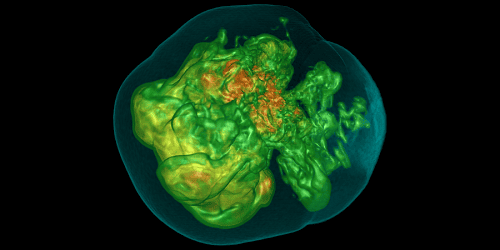What is a heat dome and are they getting worse with climate change?


High temperatures hit Joshua Tree, California, on 5 June 2024
Gina Ferazzi/Los Angeles Times via Getty Images
Mexico has been experiencing a severe heatwave due to a massive heat dome that has been affecting the country for weeks. Now this system has extended northwards into the southern US, causing extreme temperatures across a large region.
What is a heat dome?
A heat dome is not a clearly defined scientific term, but it is used by many weather forecasters. The American Meteorological Society defines it as an “exceptionally hot air mass that develops when high pressure aloft prevents warm air below from rising”. High pressure results in clear skies because sinking air warms as it descends – clouds form under the opposite circumnstances, with water droplets condensing out as rising air cools.
These high-pressure conditions mean lots of sunshine, which results in further warming and can dry out the soil, leading to less evaporation and a reduced chance of clouds and rain. These positive feedbacks can produce hotter and hotter conditions the longer the heat dome stays in one place. While heat domes cause heatwaves, there can be heatwaves without heat domes.
What makes high-pressure systems get stuck?
The jet streams are fast-flowing bands of wind in the upper atmosphere that usually help move weather systems along the planet’s surface. But sometimes big loops form in a jet stream, resulting in weather systems getting stuck in the loops. These blocking patterns, as they are known, can lead to extreme cold, extreme rain or, in the case of heat domes, extreme heat.

During the 2021 heat dome, several North American cities broke temperature records
Joshua Stevens/NASA Earth Observatory
How long do heat domes last?
They can last anywhere from days to weeks. For instance, an extreme heat dome over Canada and the northwest US in 2021 lasted nearly a month. During this event, the temperature reached nearly 50°C (122°F) in British Columbia, the highest ever recorded in Canada.
Are heat domes becoming more common as a result of global warming?
Heatwaves in general are becoming more frequent because of climate change, but most studies don’t look specifically at heatwaves caused by heat domes. There is a lot of debate about how warming will affect the blocking patterns that trap heat domes in place. A 2023 study concluded there will be an increase in “summer heat-dome-like stationary waves” over northwestern North America.
Are heat domes becoming hotter as a result of global warming?
Yes, this is certain. Because the world is now nearly 1.5°C warmer than in preindustrial times, when heat domes form today surface temperatures can get hotter than they previously would have. For instance, one study concluded the extreme temperatures recorded during the 2021 heat dome in Canada were “virtually impossible without human-caused climate change”. There is also some evidence that the intensity of heat domes is outpacing the warming trend, suggesting climate change is amplifying their intensity. “The intensities of hot extremes associated with… heat dome-like atmospheric circulations increase faster than background global warming in both historical change and future projection”, states a 2023 study.
Topics:
Read the original article here




